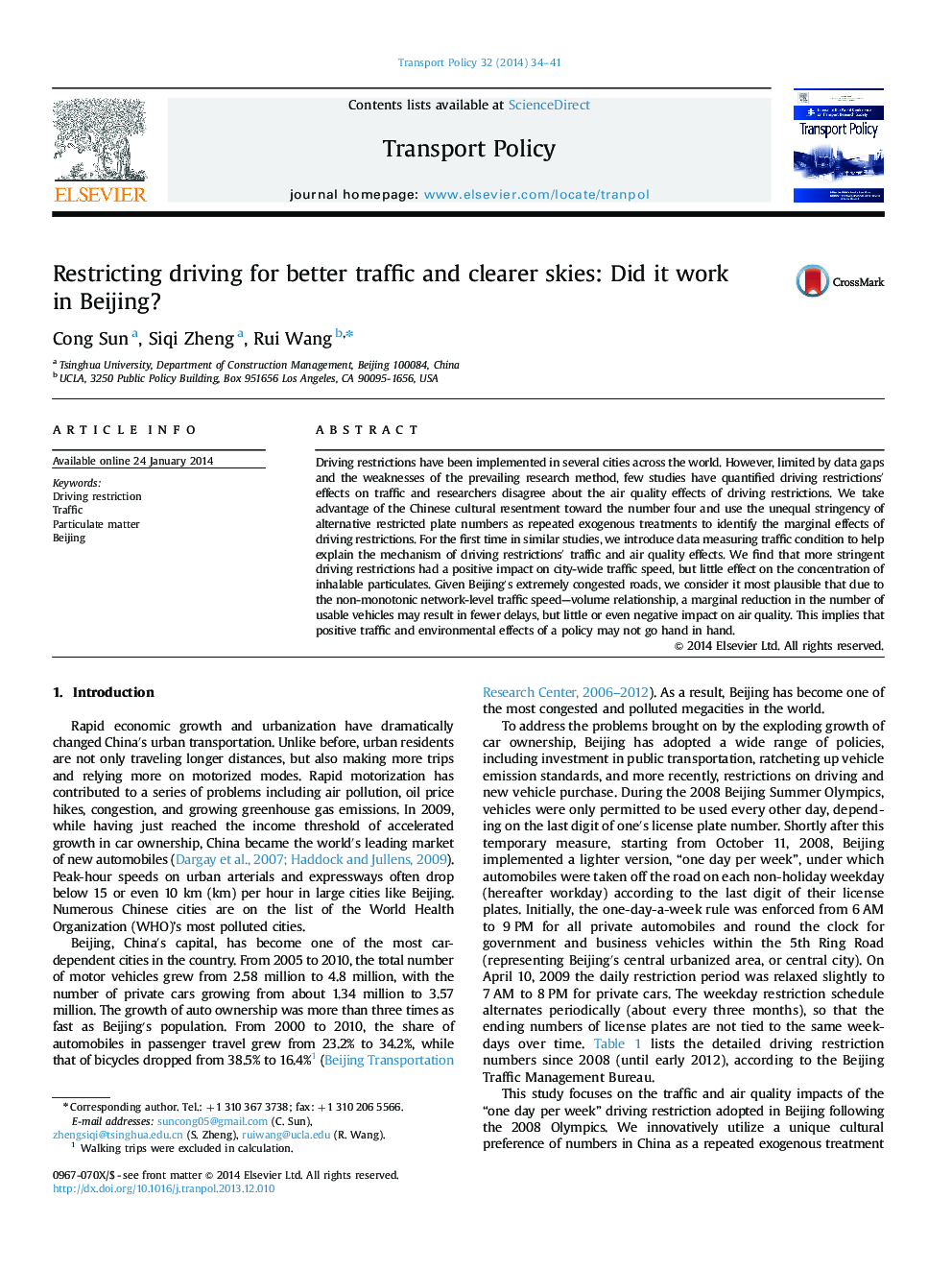| Article ID | Journal | Published Year | Pages | File Type |
|---|---|---|---|---|
| 7497966 | Transport Policy | 2014 | 8 Pages |
Abstract
Driving restrictions have been implemented in several cities across the world. However, limited by data gaps and the weaknesses of the prevailing research method, few studies have quantified driving restrictions' effects on traffic and researchers disagree about the air quality effects of driving restrictions. We take advantage of the Chinese cultural resentment toward the number four and use the unequal stringency of alternative restricted plate numbers as repeated exogenous treatments to identify the marginal effects of driving restrictions. For the first time in similar studies, we introduce data measuring traffic condition to help explain the mechanism of driving restrictions' traffic and air quality effects. We find that more stringent driving restrictions had a positive impact on city-wide traffic speed, but little effect on the concentration of inhalable particulates. Given Beijing's extremely congested roads, we consider it most plausible that due to the non-monotonic network-level traffic speed-volume relationship, a marginal reduction in the number of usable vehicles may result in fewer delays, but little or even negative impact on air quality. This implies that positive traffic and environmental effects of a policy may not go hand in hand.
Related Topics
Social Sciences and Humanities
Social Sciences
Geography, Planning and Development
Authors
Cong Sun, Siqi Zheng, Rui Wang,
